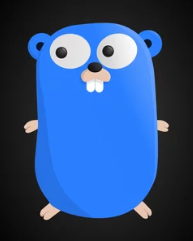Automating PDF Watermarking in Golang with UniPDF
 unidoclib
unidoclibTable of contents

Welcome, dear readers, to an intriguing journey through automation and Golang. Today, we're focusing on Automating PDF Watermarking using UniPDF in Golang. Whether you're a newbie just dipping your toes into the Golang waters or an expert looking to refine your skills, this post has got something for you. Let's get started!
Golang: A Glimpse Into Its Brilliance
Golang, commonly known as Go, isn't just another programming language; it's a symphony of simplicity, efficiency, and power. Known for its concise syntax and robust concurrency features, Go has paved its way into various applications, from web servers to data tools and even PDF manipulations.
The Need for PDF Watermarking
In the digital age, PDFs are the new norm. Be it official documents, ebooks, or digital invoices, the ubiquity of PDFs is undeniable. However with their widespread use, the security and authenticity of these documents become paramount.
Why watermark?
1. Branding: Watermarking is an excellent way to imprint your brand on various documents, making them look more professional.
2. Protection: It helps in discouraging unauthorized reproduction or distribution.
3. Authenticity: It ensures that the document you're holding is genuine and not a counterfeit.
Why Opt for Automation?
1. Consistency: No more varied positioning or forgotten watermarks. Automation ensures uniformity.
2. Time-saving: Eliminate the tedious manual process of adding watermarks. Click a button, and voila!
3. Error Minimization: Automated scripts seldom forget or make mistakes, unlike us humans.
Delving Deeper: UniPDF
While Go offers a myriad of libraries for PDF manipulation, unipdf stands out, both in terms of ease of use and versatility.
Why UniPDF?
Comprehensive: UniPDF offers a wide range of functionalities, from basic PDF creation to complex operations like watermarking.
Actively Maintained: It's regularly updated, ensuring compatibility and continuous addition of features.
Efficient: Due to its optimized structure, UniPDF operations are generally fast and reliable.
Setting the Stage: Getting Started with UniPDF
1. Installation:
go get github.com/unidoc/unipdf/v3
2. Integration:
Just add this to your Go file, and you're good to go!
import "github.com/unidoc/unipdf/v3/contentstream/draw"
The Grand Performance: Watermarking with UniPDF
Let's break it down:
1. Create a Watermark Configuration: Begin by designing the appearance of your watermark – its size, font, angle, and so on.
2. Embed the Watermark: Insert the watermark into your PDF, ensuring it's visible, yet subtle.
Here's a simplified function for the same:
func AddWatermark(input, output, watermarkText string) error {
// Load your PDF file
pdfReader, err := unipdf.NewPdfReader(input)
if err != nil {
return err
}
// Create a new PDF writer
pdfWriter := unipdf.NewPdfWriter()
// Iterate through the pages and add the watermark
for _, page := range pdfReader.Pages {
// Watermark magic happens here
// ...
// Write the watermarked page to the new PDF
pdfWriter.AddPage(page)
}
return pdfWriter.WriteToFile(output)
}
Of course, this is just a simple representation. The process involves diving deeper into the UniPDF methods and fine-tuning them to your needs.
Conclusion
Harnessing the power of Golang with the proficiency of UniPDF makes PDF watermarking as breezy as a walk in the park. So the next time you're watermarking numerous documents, you know the drill—let Golang and UniPDF handle the heavy lifting!
Embrace the future. Embrace automation. Happy coding! 🚀🌟
Subscribe to my newsletter
Read articles from unidoclib directly inside your inbox. Subscribe to the newsletter, and don't miss out.
Written by

unidoclib
unidoclib
Welcome to our Hashnode profile, where we share our expertise in PDF and office document generation and manipulation in Golang. As a company dedicated to creating and publishing content in this domain, we are passionate about utilizing the power of Golang to streamline document handling and enhance user experiences. Our blogs and articles aim to simplify the complexities of PDF and office document manipulation, making them accessible and beneficial for our audience. Whether you're a developer seeking to integrate powerful document generation capabilities into your projects or an enthusiast interested in learning more about Golang's potential, we've got you covered. Join us on this exciting journey as we explore the advanced features of the Golang PDF library, uncovering its hidden gems to create stunning and functional documents effortlessly. From rendering text and images to seamless page manipulation and implementing advanced features like watermarking and digital signatures, we cover various topics to cater to multiple interests. As an organization that values collaboration and growth, we encourage you to connect with us and share your thoughts, ideas, and questions. Let's foster a vibrant community where we can learn from one another and push the boundaries of document handling in Golang. Stay tuned for regular updates as we continue to provide valuable insights, tips, and practical examples, empowering you to harness the full potential of Golang for efficient document generation and manipulation. Thank you for being a part of our journey, and we look forward to embarking on this exciting adventure together!